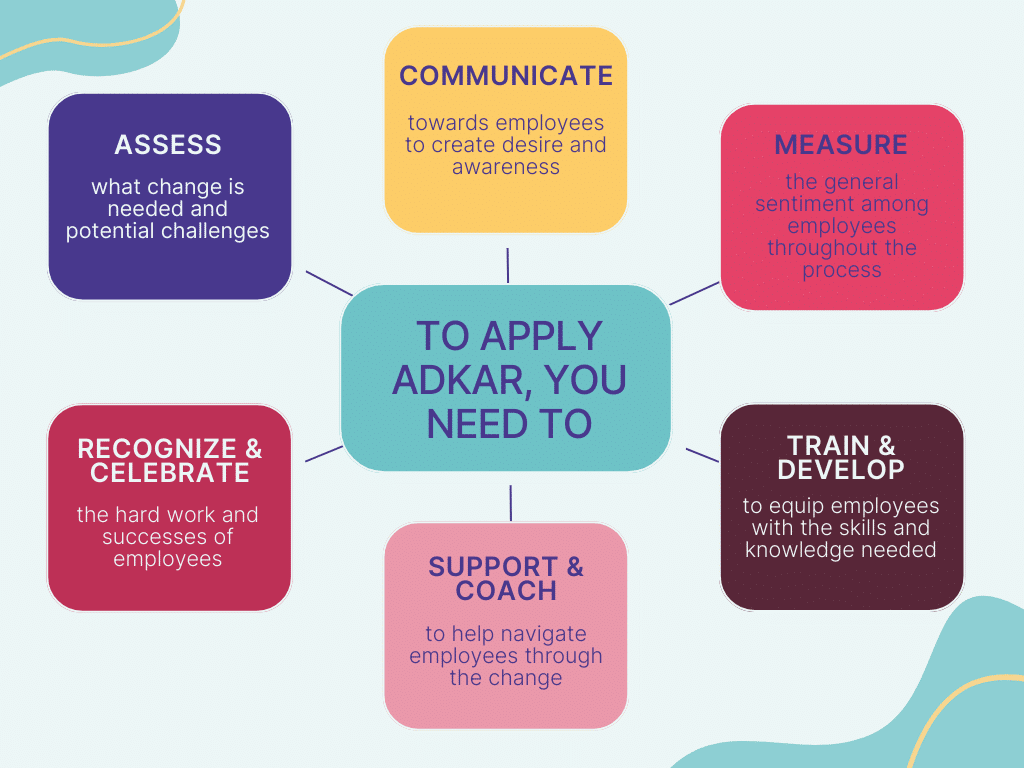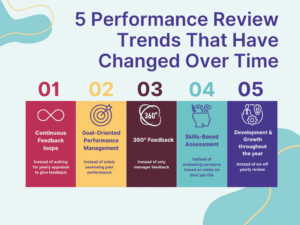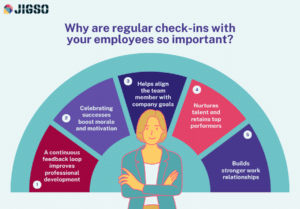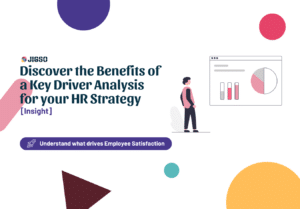Organizational Change using the ADKAR model
What is Corporate Change?
Corporate change refers to any significant transformation that affects things such as structure, processes, culture, or strategy. These changes can be initiated internally in response to evolving business or employee needs and externally due to shifts in the market, regulatory requirements, or technological innovations.
All change impacts employees but we will mainly focus on examples of corporate changes that can have a big impact on employee wellbeing:
Structural Change:
- A company reorganizes its departments to centralize decision-making and improve coordination.
- Two companies merge to create a larger, more integrated organization with increased market share.
Cultural Change:
- A company promotes a culture of innovation by encouraging employees to share ideas and experiment with new approaches.
- An organization undergoes diversity and inclusion training to foster a more inclusive and equitable work environment.
Personnel Change:
- A company hires new executives to lead a turnaround strategy aimed at revitalizing the business.
- An organization undergoes a workforce reduction as part of a cost-cutting initiative in response to economic challenges.
Policy Change:
- An organization updates its remote work policy to allow employees greater flexibility in where and how they work.
- A revised overtime policy, altering the criteria for eligibility, compensation rates, or approval processes for overtime work
Why is it important to have a well thought out plan for change?
When employees don’t understand a change, it can lead to several negative outcomes that impact both individuals and the organization as a whole.
For starters, resistance often emerges when employees feel apprehensive or skeptical about the change, fearing the unknown or perceiving it as a threat to their job security, workload, or routines. This resistance can hinder the smooth implementation of the change and prolong the transition period.
A lack of understanding may result in misalignment, where employees continue to operate under old processes or behaviors that conflict with the new expectations, goals, or direction of the organization. This leads to inefficiencies, confusion, and frustration among team members.
Another common challenge is decreased productivity when employees are unclear about the change. Confusion or uncertainty can impair their ability to perform their tasks effectively, resulting in errors, delays, and a decline in overall productivity.
Stress and anxiety stemming from uncertainty can also take a toll on employee morale, job satisfaction, and well-being. Employees may experience heightened stress levels as they struggle to navigate the change, leading to decreased motivation, engagement, and retention.
Communication breakdowns often accompany a lack of understanding, further exacerbating the challenges. Without clear communication channels and transparent information about the change, misinformation, rumors, or confusion may spread among employees, undermining trust and collaboration within teams and across the organization.

Lastly, employees may lose confidence in the organisation’s leadership if they feel left in the dark or inadequately supported during the change process. This loss of confidence can erode trust and loyalty, ultimately impacting employee morale and commitment.
In conclusion, effective communication, training, and support are essential to address employees’ concerns, clarify expectations, and facilitate their understanding and acceptance of the change. If all of these risks are left unaddressed, then there is an augmented risk of burnouts or people leaving the company.
By providing clear explanations, opportunities for feedback, and ongoing support, companies can mitigate resistance, align employees with the change, and foster a smoother transition process.
What is the ADKAR Model?
The ADKAR model is an acronym representing five key elements necessary for individuals to embrace change successfully:
- Awareness:
Through effective communication, people need to be aware of the need for change.
Reasons behind the change, the benefits it will bring, and the consequences of not changing need to be discussed. Only then can people accept the change. - Desire:
If people understand how the change will personally benefit them, then they will develop a desire to support and participate in the change process. - Knowledge:
The organisation needs to provide employees the training and resources to adapt to new processes, systems, or ways of working. - Ability:
People need to have the ability to implement the change effectively in their day-to-day tasks. This may involve providing ongoing support, coaching, and feedback to help employees develop the confidence and competence to perform their new roles or tasks. - Reinforcement:
Change is a continuous process, and reinforcement is crucial to sustain it over time. Reinforcement involves recognising and rewarding people for embracing the change, celebrating milestones, and addressing any resistance or barriers that may arise along the way.

How to apply ADKAR in Change Management?
Now that we understand the five elements of the ADKAR model let’s explore how it can be applied in the context of change management and employee wellbeing:
- Assessment:
The first step is to assess the organisation’s readiness for change and identify potential challenges. This helps tailor change management strategies to address specific needs and concerns. - Communication:
Then, there needs to be a well-thought out plan of effective communication to create awareness and desire for change among employees. Management needs to communicate the reasons behind the change, the benefits it will bring, and how it aligns with the company vision and goals. Communication should be clear, transparent, and ongoing throughout the change process. - Measure:
Listen to your employees when they express their concerns about the change. Measure the general sentiment among employees throughout the change process. Send out surveys on a few, planned moments in time during the process. This allows the organization to react quickly when engagement is low among employees. - Training and Development:
Provide adequate training and development opportunities to equip employees with the knowledge and skills they need to adapt to the change. Training programs should be tailored to the specific needs of different groups within the company and should be delivered in a variety of formats to accommodate different learning styles. - Support and Coaching:
Change can be daunting for employees, and they may need support and coaching to help them navigate through it. Leaders should be available to provide guidance, answer questions, and address concerns that employees may have. Creating a supportive environment where employees feel empowered to voice their opinions and ideas can help build trust and engagement. - Recognition and Celebration:
Last but not least, recognising and celebrating successes along the way can help reinforce the change and motivate employees to continue embracing it. Whether it’s a compliment acknowledging people for their efforts, celebrating milestones, or showcasing the positive impact of the change, reinforcement is essential to sustain momentum and drive long-term success.

Conclusion
Change is inevitable, but it doesn’t have to be chaotic or disruptive. By applying the ADKAR model, organizations can navigate through change more effectively, ensuring that individuals embrace and adapt to new ways of working. By focusing on creating awareness, fostering desire, providing knowledge and support, and reinforcing change over time, organizations can increase their chances of success and achieve their desired outcomes. Embracing change as a continuous process rather than a one-time event can help companies stay agile, innovative, and competitive.



